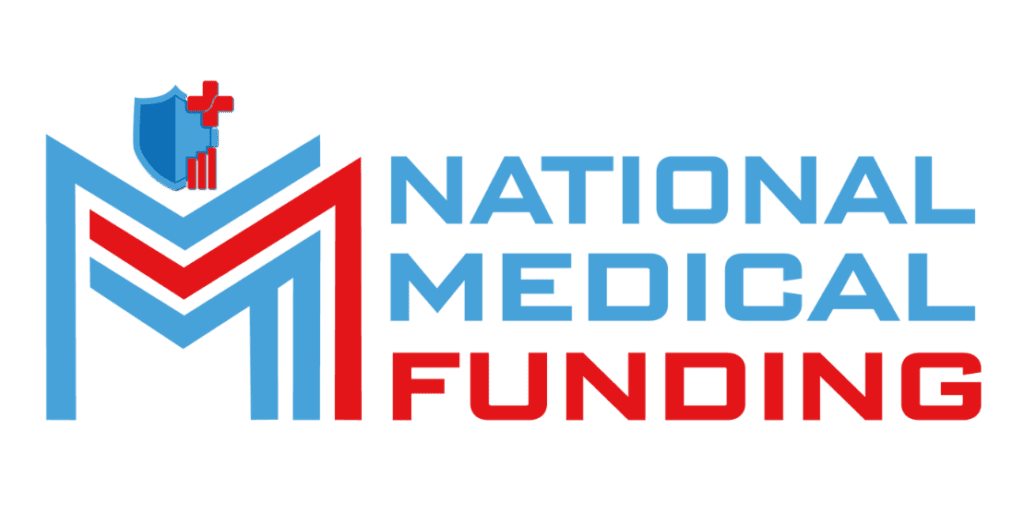
Optimizing Revenue Management: How Smart Heal
Why Revenue Management Matters for Your Clinic Ru...

Saturday and Sunday – CLOSED
support@nationalmedicalfunding.com



When patients walk into your medical practice, what do they feel? Comfort? Calm? Confidence? The environment of a healthcare space has a direct impact on patient experience, satisfaction, and even retention. But giving your clinic or hospital a makeover takes more than vision—it takes smart financial planning. That’s where secure medical financing can make all the difference.
A patient-centric redesign isn’t just about a coat of paint or new furniture. It’s about creating a welcoming atmosphere, improving operational flow, and ensuring patients feel seen and cared for from the moment they arrive. And if you’ve been holding off on upgrades because of cost, term loans can be the game-changer that bridges the gap between your dream and reality.
Let’s be honest—most healthcare environments still feel sterile, rushed, and disconnected. A patient-centric redesign flips that narrative. It focuses on experience over efficiency, ensuring comfort, privacy, and emotional well-being are prioritized alongside clinical excellence.
Think of features like natural lighting, soft color palettes, comfortable seating, or digital check-ins to minimize waiting times. Even subtle changes, like adding dedicated areas for children or private consultation zones, can transform how patients perceive your care.
But before you start ordering designer furniture or knocking down walls, you’ll need a solid financial plan to guide your renovation. That’s where medical financing solutions come in—structured, flexible funding options tailored for healthcare professionals who want to enhance patient experience without disrupting operations.
Renovating a medical practice isn’t cheap—but it’s an investment that pays back in loyalty, referrals, and operational efficiency. Costs vary depending on your goals. Basic upgrades like flooring, paint, and lighting might range from $20,000 to $50,000. Full-scale redesigns that include layout changes, new medical equipment, or technology integration could easily reach six figures.
You’re not just remodeling a space—you’re reshaping a brand experience. Patients who feel valued in your environment are more likely to return, follow treatment plans, and recommend your practice. But managing those upfront costs can be overwhelming for even the most established clinics.
That’s where term loans come in. Unlike revolving credit lines, term loans offer predictable repayment schedules and stable interest rates, helping you budget effectively while completing your renovation on time.
Before applying for funding, get crystal clear about your renovation goals. What exactly are you trying to achieve? Aesthetic improvements? Workflow redesign? Expanded patient capacity?
Start by listing everything you’d like to change—then break it into “must-haves” and “nice-to-haves.” Next, gather quotes from contractors, architects, and designers. The clearer your budget, the easier it is to calculate your loan needs accurately.
To get a deeper understanding of how to leverage your assets for funding, check out The Physician’s Guide to Asset-Based Lending. It explores how personal holdings can help you secure practice funding with minimal strain on your current operations.

When funding a medical practice renovation, you’ll encounter multiple options—lines of credit, leasing, equipment financing, and short-term loans. However, for large, structured projects like redesigns, term loans are often the most practical choice.
A term loan gives you a lump sum upfront, which you can use for design, construction, furniture, or even new patient management systems. You then repay it over a fixed period—usually between three to ten years—with interest. The advantage? Predictable monthly payments, clear timelines, and the ability to budget without surprises.
If you’re unsure whether to lease or own high-value equipment as part of your renovation, it’s worth exploring When to Lease vs. Own: A Financial Strategy for High-Value Medical Equipment. It breaks down which option best supports your financial goals during expansions or upgrades.
Applying for a term loan might seem daunting, but it doesn’t have to be. Most lenders specializing in healthcare understand the industry’s financial dynamics—insurance reimbursements, billing cycles, and capital needs.
Start by gathering essential documents: business financial statements, tax returns, renovation quotes, and a detailed project plan. Lenders love clarity—it shows you’ve done your homework. Next, determine how much you need to borrow and how long you’d like to repay it. Remember, the right lender will guide you through flexible terms tailored to your situation.
For new or growing practices, understanding medical practice startup loans can also help you plan future expansions. Whether you’re redesigning or launching from scratch, these loans provide the foundation for sustainable growth and patient satisfaction.
Modern healthcare isn’t just about aesthetics—it’s about blending design with smart technology. A truly patient-centric renovation includes upgrades like digital appointment check-ins, automated patient flow systems, telemedicine suites, and ergonomic exam room layouts.
These features not only improve patient comfort but also streamline your staff’s workflow. By minimizing bottlenecks and increasing efficiency, you enhance care delivery and profitability. Financing these upgrades through a term loan allows you to adopt cutting-edge systems without draining your operating budget.
To see how specialized funding models support new-age clinics, explore Financing Your Veterinary Practice Startup: A Complete Guide. It offers great insights that apply across medical sectors—whether you’re running a dental clinic, veterinary office, or general practice.
Not all lenders are created equal. Traditional banks often offer rigid terms, slow approvals, and limited understanding of healthcare-specific cash flow patterns. On the other hand, specialized healthcare lenders focus solely on medical professionals, offering flexible repayment structures and faster access to funds.
Working with a healthcare lending company that understands your industry can make the entire renovation process smoother and less stressful. They know how to evaluate your practice’s true potential—not just its balance sheet.
Curious about the difference between general and specialized lenders? Dive into The Real Differences Between a Specialty Healthcare Lending Company and a Traditional Bank. It clearly explains why choosing a healthcare-specific lender can help you secure better rates and terms for your redesign.

Every renovation project has its hurdles. The most common? Underestimating costs, choosing the wrong contractor, or not aligning design with daily workflow. Avoid cutting corners during the planning phase—it often leads to higher expenses later.
It’s also crucial to maintain a financial cushion for unexpected costs like construction delays, material shortages, or regulatory changes. Using a well-planned term loan helps absorb these fluctuations while keeping your cash flow stable.
Finally, make sure your redesign truly supports patient comfort and operational efficiency—not just aesthetics. A space that looks great but disrupts workflow can hurt your team’s productivity and patient satisfaction.
When your redesign is complete, the transformation goes beyond walls and décor—it extends into how patients feel about your care. A welcoming environment signals trust, safety, and professionalism. Over time, this translates into stronger patient relationships, higher referrals, and improved brand reputation.
The ROI of a patient-centric renovation is both emotional and financial. Patients remember how they felt, and when your environment reflects genuine care, they become loyal advocates for your practice. And because your financing is structured through a manageable term loan, you can enjoy these long-term benefits without compromising cash flow.
Renovation isn’t a one-time project—it’s part of a long-term commitment to better care. After your redesign, focus on maintaining the new environment. Schedule regular upkeep, refresh areas periodically, and continue investing in staff training to enhance patient interaction.
Financially, monitor your loan repayment and business performance closely. Use metrics like patient satisfaction scores, new patient acquisition, and revenue growth to assess ROI. With the right financial foundation, you can continue evolving your practice without strain or disruption.
Redesigning your medical practice is a bold move—it requires vision, strategy, and financial confidence. But when done right, it redefines how your patients experience healthcare. A term loan empowers you to take that step with clarity and control, turning your ideas into tangible improvements that drive growth and satisfaction.
So, whether you’re modernizing your waiting area, integrating new technologies, or rethinking your layout, remember: the right financing makes it all possible. Explore your options, align your vision with your budget, and take the first step toward a truly patient-centered future.
With secure medical financing and specialized medical financing solutions, you can make your renovation not just possible—but purposeful.
Why Revenue Management Matters for Your Clinic Ru...
For many doctors and healthcare professionals, one of t...

Fuel your medical practice’s growth with financial solutions tailored to your needs. We’re here to support independent practitioners and group practices with strategies built for success.
Mon Fri: 8:00am – 6:00pm
Saturday: Closed
Sunday: Closed
Copyright © 2025 National Medical Funding